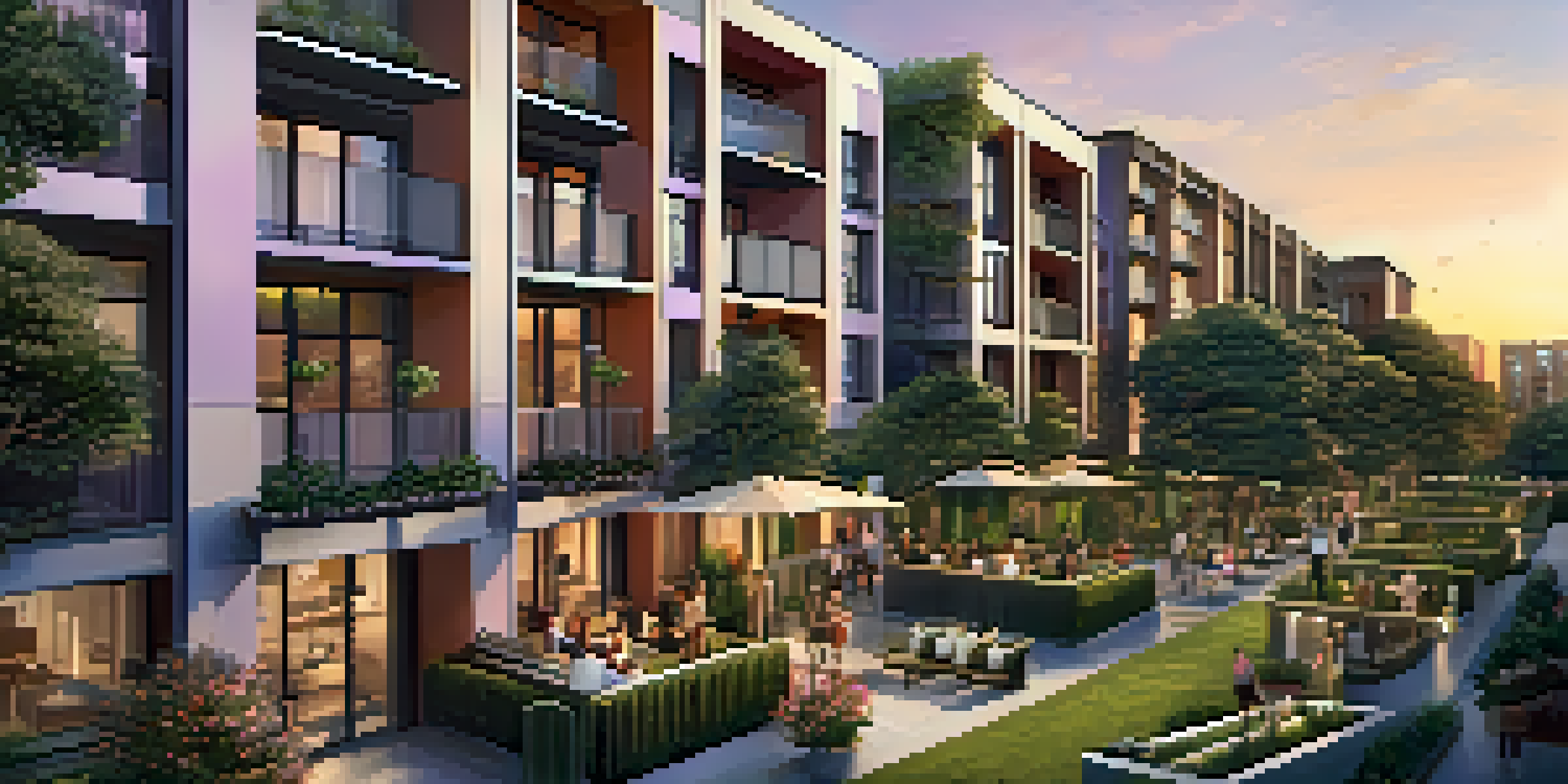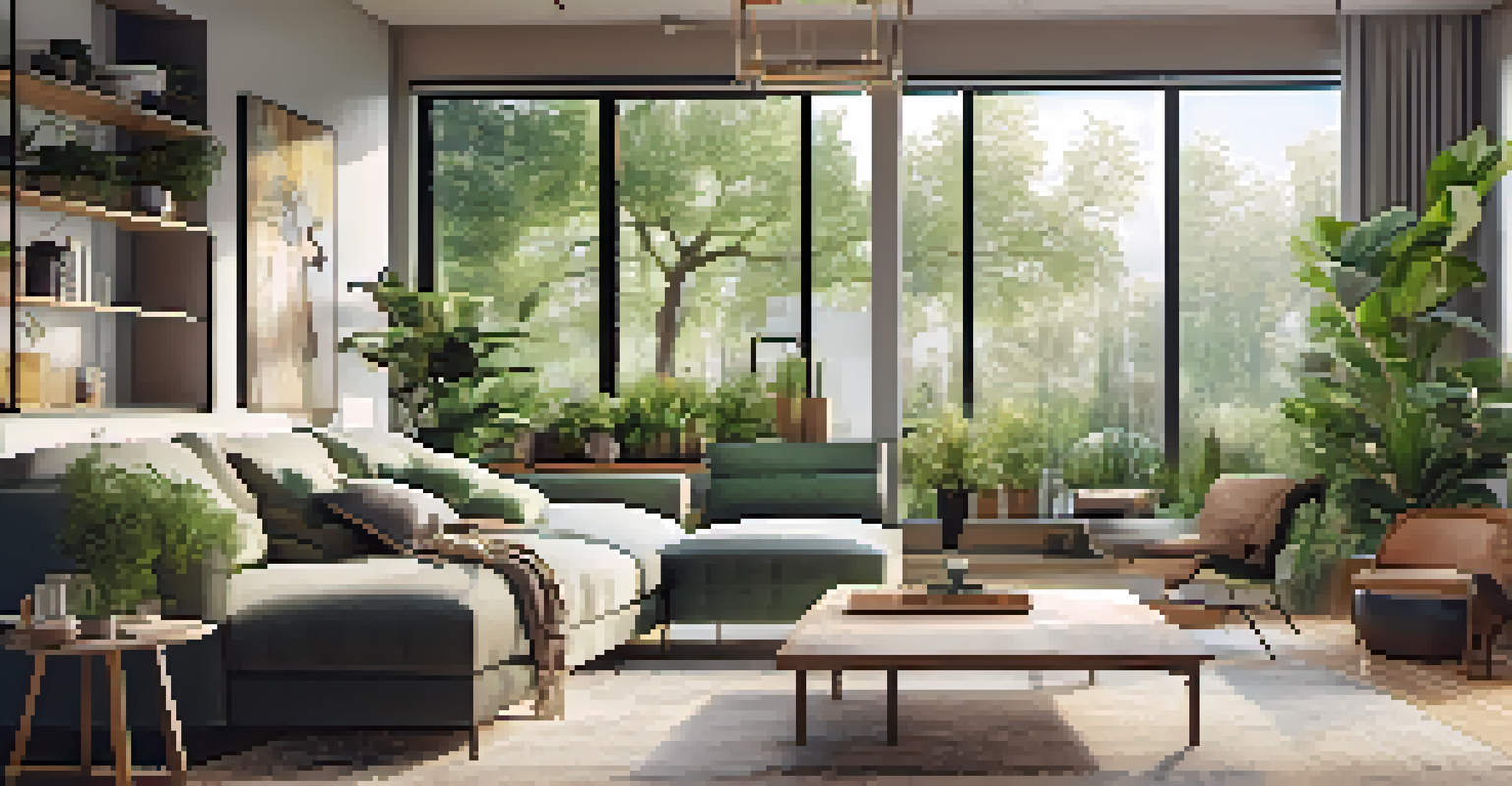Examining Trends in Multi-Family Housing Development by Region

Understanding Multi-Family Housing: A Quick Overview
Multi-family housing refers to residential buildings designed to accommodate multiple households. This category can include apartment complexes, duplexes, and townhouses. As urbanization increases, the demand for such housing continues to rise, especially in metropolitan areas.
The future belongs to those who believe in the beauty of their dreams.
These developments play a crucial role in providing affordable living options, particularly for younger generations and urban professionals. They often come with amenities that cater to modern lifestyles, such as gyms, communal spaces, and proximity to public transport. Understanding the dynamics of multi-family housing is essential for grasping current trends in residential development.
Examining these housing types helps us appreciate the varying needs of communities across different regions. From affordability to sustainability, multi-family housing development is influenced by local market conditions, regulatory environments, and demographic shifts.
Regional Variations: How Location Shapes Development Trends
The landscape of multi-family housing varies significantly across different regions. In coastal cities like San Francisco and New York, high demand and limited space have led to vertical living solutions, such as high-rise apartments. Conversely, cities in the Midwest may favor horizontal developments for affordability and ample land.

Climate and culture also play a role in shaping these trends. For instance, urban areas in the South often see more garden-style apartments that blend indoor and outdoor living, catering to the warmer climate. Meanwhile, regions with harsher winters may focus on designs that prioritize insulation and energy efficiency.
Urbanization Drives Housing Demand
As more people move to cities for job opportunities, the demand for multi-family housing that offers affordability and community is increasing.
Understanding these regional preferences helps developers create tailored solutions that meet local needs. As trends evolve, what works in one area may not necessarily translate to another, making it crucial to evaluate regional demands.
Impact of Urbanization on Multi-Family Housing Demand
Urbanization is a significant driving force behind the rising demand for multi-family housing. As more people flock to cities for job opportunities and lifestyle choices, the need for affordable living spaces has never been more pressing. This trend is particularly evident in tech hubs and major metropolitan areas.
Sustainability is no longer about doing less harm. It’s about doing more good.
With limited space in urban settings, developers are increasingly turning to multi-family housing as a solution. These developments not only accommodate more residents but also foster a sense of community by bringing diverse groups together. As cities expand, the pressure to provide adequate housing intensifies.
Urbanization also influences the types of amenities desired in these developments. Residents are seeking more than just a place to live; they want vibrant communities that offer easy access to work, entertainment, and public transport—all of which multi-family housing can provide.
The Role of Affordability in Multi-Family Housing Development
Affordability remains a critical issue in the realm of multi-family housing, particularly in high-demand areas. As property prices soar, developers are challenged to create housing that meets the needs of lower and middle-income families. This has led to innovative solutions, such as mixed-use developments that combine residential and commercial spaces.
Government policies and incentives play a pivotal role in shaping affordable housing projects. Many cities are implementing zoning changes and offering tax credits to encourage the development of affordable units. This collaborative approach aims to bridge the gap between developers and community needs.
Affordability Challenges for Developers
With rising property prices, developers are tasked with creating affordable multi-family housing options, often through innovative mixed-use developments.
By addressing affordability, developers can contribute to more inclusive neighborhoods. When a diverse range of income levels can reside in close proximity, it fosters a richer community experience and enhances social cohesion.
Sustainability Trends in Multi-Family Housing Developments
Sustainability has become a buzzword in recent years, and multi-family housing is no exception. Developers are increasingly incorporating green building practices and energy-efficient technologies into their projects. This not only appeals to environmentally conscious consumers but also often results in cost savings over time.
From using sustainable materials to implementing solar panels and green roofs, the focus on eco-friendly designs is reshaping the multi-family landscape. These developments not only reduce the carbon footprint but also create healthier living environments for residents.
As awareness of environmental issues grows, the demand for sustainable housing will likely continue to rise. Developers who prioritize sustainability can differentiate themselves in a competitive market while contributing to a healthier planet.
Technological Innovations in Multi-Family Housing Development
Technology is revolutionizing the way multi-family housing is designed and managed. From smart home features that allow residents to control lighting and temperature from their devices to advanced security systems, technology enhances the living experience. This trend is particularly appealing to younger generations who value convenience and connectivity.
Moreover, property management has evolved with the integration of technology. Automated systems for maintenance requests, online rent payments, and virtual tours streamline operations, making the process easier for both residents and managers. These innovations foster a modern living experience that aligns with the fast-paced lifestyle of urban dwellers.
Sustainability Shapes Future Developments
Incorporating green technologies and sustainable practices is becoming vital for multi-family housing to meet consumer demands and reduce environmental impact.
As technology continues to advance, the multi-family housing sector must keep pace to meet evolving consumer expectations. Staying ahead of these trends can provide a competitive edge in a rapidly changing market.
Future Outlook: Predicting Trends in Multi-Family Housing
Looking ahead, the future of multi-family housing development seems promising yet complex. With ongoing urbanization and shifts in demographics, developers must remain agile to adapt to emerging trends. Factors such as remote work, changing family structures, and evolving consumer preferences will continue to shape the market.
Additionally, as cities grapple with housing shortages, the pressure to innovate will intensify. Developers may need to explore unconventional solutions, such as adaptive reuse of existing buildings or co-housing models, to address these challenges effectively. The willingness to experiment can lead to exciting new opportunities.

Ultimately, the multi-family housing sector must prioritize flexibility and sustainability to thrive in this evolving landscape. By embracing change and anticipating future needs, developers can create communities that are not only livable but also vibrant and resilient.